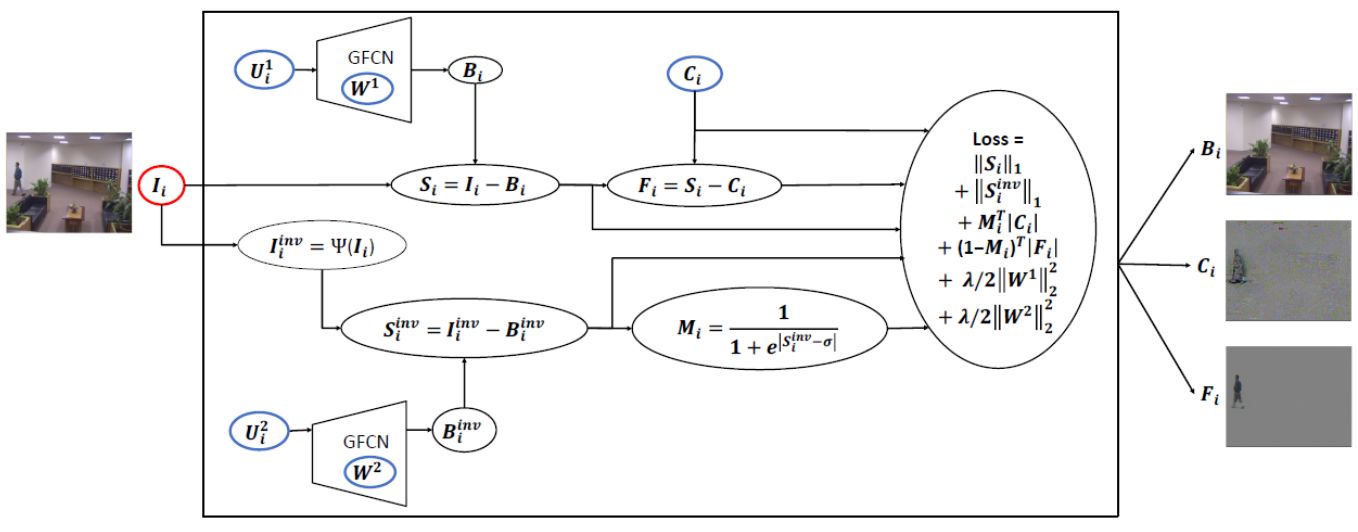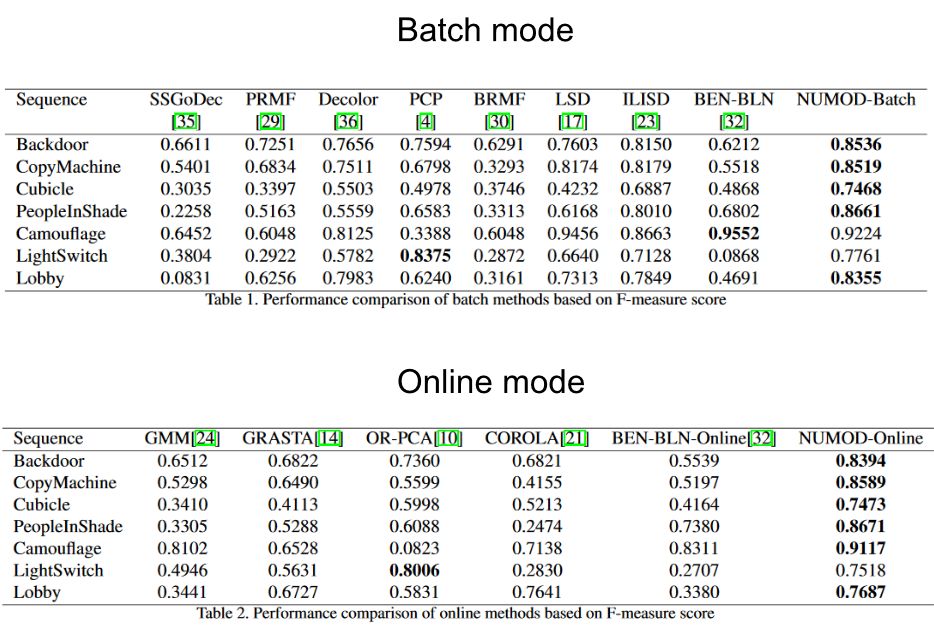Neural Unsupervised Moving Object Detection (NUMOD)

Fig. 1: NUMOD Computational Scheme

Fig. 2: NUMOD Results
Our method is one of the first to have some desirable characteristics for moving object detection (MOD): (1) batch or online mode of operation, (2) accommodation of illumination variation in the scene, (3) computational efficiency.
Fig. 1 shows a computational graph for our method NUMOD (Neural Unsupervised Moving Object Detection). It shows that an image is decomposed into background, noise and illumination change and moving objects, if any present in it. There are two generative neural networks in the computation scheme. Their architectures ensure that the generated background is temporally correlated, as in low-rank matrix decomposition. Incidentally, most state-of-the-art MOD methods are based on low-rank and sparse decomposition. Because NUMOD is parameterized by neural nets, it can be applied to both online and batch mode, a feat that most MOD methods do not possess simultaneously.
Fig. 2 shows that NUMOD can beat state-of-the-art methods on many benchmark videos both in online and batch modes.
Related Publication
- F. Bahri, M. Shakeri, N. Ray, "Online Illumination Invariant Moving Object Detection by Generative Neural Network," ICVGIP 2018. arXiv: https://arxiv.org/abs/1808.01066